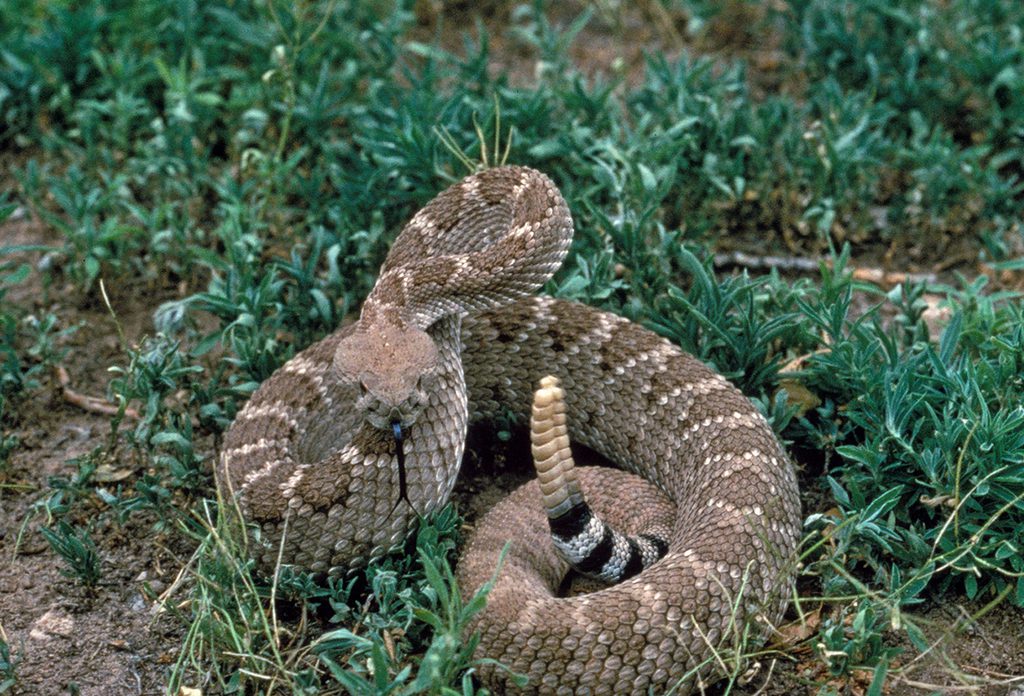By Horace Gore
July and August is a good time to encounter a snake in Texas. The reptile may be a striped garter snake or a blotched Texas rat snake. Texas has a lot of hog-nosed snakes that spread their heads like a cobra, but are harmless other than eating toads! Several racers are daytime crawlers that rob a lot of bird nests and eat other snakes, but are harmless.
Safety measures such as wearing full clothing and boots—being careful where you walk and put your hands—solves most of the problems with all snakes—not just poisonous ones.
As a percentage, there are at least 15 species of harmless snakes for every harmful species. Texas has four poisonous snakes: rattlesnakes, copperheads, cottonmouths, and the diminutive coral snake. However, there are about nine species of rattlesnakes all over the state. Most poisonous snakes seek cool, quiet places out of harm’s way in the daytime, and are most active at night.
Poisonous Texas snakes
Three venomous snakes can strike and inject venom, but one—the coral snake—has to chew as the venom goes in. So getting bit by a coral snake has odds much like winning the lottery.
Now, let’s talk about the other three poisonous snakes. The most dangerous are the diamondback and canebrake rattler. Adults rattlesnakes are big, with large venom sacs on each side of the head, and fangs that can penetrate deep with a direct bite. Scientists say that a drop of venom is destructive to 50 pounds of meat tissue.
The truth is, not many poisonous snakes have full venom sacs when they bite and smaller snakes have small venom sacs with small amounts of venom. Also, venomous snakes often strike at an angle, preventing the fangs from penetrating enough to inject a dangerous amount of venom.
Snake venom
All venomous snakes use venom to catch their prey—large snakes catch rabbits, squirrels, field rats, birds, mice and any other red-blooded animal that they can swallow. Smaller snakes use venom to catch small birds, mice, other rodents, and any red-blooded animal that they can swallow.
Large rattlesnakes can have a lot of venom if they have not fed for several days. On the other hand, a rattler that strikes bone or thin flesh may leave only a small amount of venom in a victim. Rattlers that have used venom to catch a rabbit, squirrel, rat, etc. may not have enough venom to make the victim sick.
Smaller snakes such as copperheads and cottonmouths have small venom sacs and seldom inject enough venom to cause anything but swelling and a short illness. The biggest problem of poisonous snakes is harm to outdoor dogs and cats. Such victims usually get over the snake bite in a few days, after a lot of swelling and some dead flesh.



